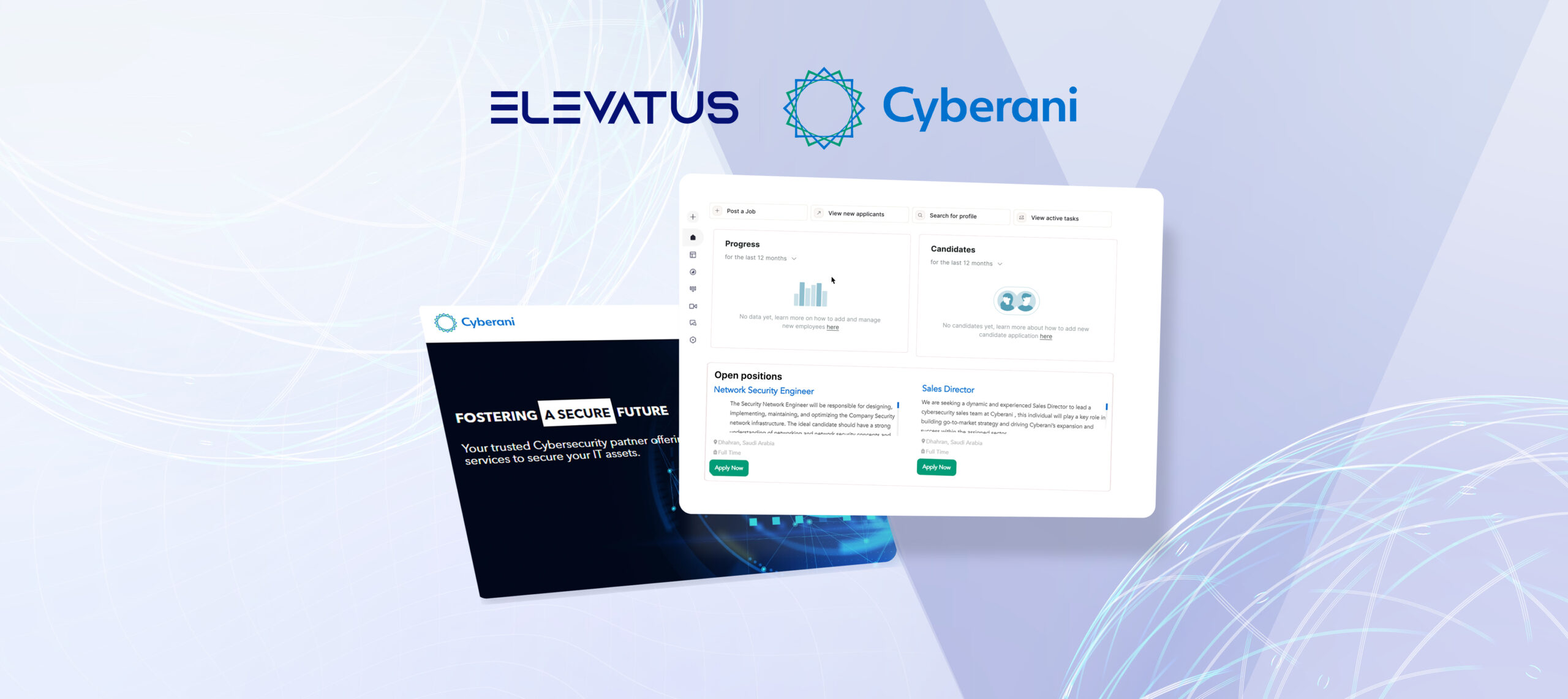
Employee Wellness Plan
November 24, 2023
Reem Al-Tamimi
Content Writer
Embarking on the employee wellness journey opens the door to a workspace vibrant with vitality, health, and productivity. In today’s world, a notable 61% of employees are already making positive lifestyle changes thanks to these programs. These wellness initiatives have become essentials, directly meeting the contemporary workforce’s needs for a more holistic approach to professional life, especially noticeable among millennials.
This blog serves as a lighthouse, illuminating the profound influence of wellness on both individual well-being and the collective heartbeat of a business. It’s about embracing a comprehensive view of health that elevates every participant and drives entire organizations to their zenith.
Are you ready to discover an array of actionable strategies? We’re unveiling genuine, adaptable methods to create the best employee wellness plan. The objective? A flourishing team, equipped and eager to embrace each challenge with energy and enthusiasm.
One single platform to recruit and onboard new hires
Confidently automate task delegation for new hires, eliminating manual checklists, data duplication, and overlooked details. Set role-specific onboarding tasks, assign owners, activate automatic reminders, and track progress effortlessly in one place.
Request a demoEmpowering Teams Through Employee Wellness Plans
So, what is an employee wellness plan? It’s the engine of a proactive workforce. Undefined, diverse, but integral, these strategies ignite healthier lifestyles among employees, extending even to their families. It’s not just add-ons but essential mechanisms that inject vitality directly into the workplace’s heart.
These plans are foundational for driving down healthcare costs. They encourage preventative care and active living, mitigating chronic illnesses and reducing medical claims. But the benefits are more than just numbers. We’re talking about a workforce with higher energy, clearer focus, and a robust handle on stress — direct upshots of a solid employee wellness plan. This isn’t just about less time out sick; it’s about bringing one’s full self to work every single day.
And there’s more. Employee wellness plans speak volumes about company values; they’re a sign of a business that sees its staff as people, not just resources. This approach lifts morale and builds a sense of loyalty that paycheck hikes alone can’t buy. It’s about cultivating an environment where everyone’s invested in collective health and success. When people feel cared for, they commit — not just to their jobs but to the shared vision driving the company forward.
In essence, employee wellness plans are the bedrock of a resilient, flourishing workforce. They’re not a side dish — they’re the main course in serving up a healthy, engaged, and dedicated team. And in the business world, that’s not just a nice thought; it’s a strategic move.
Steps to Create an Effective Employee Wellness Plan


Crafting an effective employee wellness plan is laying the foundation for a healthier, more vibrant workforce. It’s not just about introducing health programs; it’s about creating a sustainable culture of well-being that resonates with every individual in the organization. Below, we delve into the critical steps needed to create a wellness plan that’s not only beneficial but also engaging and inclusive for all employees.
Assessing the Current Wellness Scenario and Employee Needs
Before you can build a roadmap for wellness, you need to understand where your organization currently stands. Start with a comprehensive assessment of the existing wellness environment. Are there any programs already in place? What is the participation rate, and how are they perceived by the employees?
Next, turn your attention directly to your team. Conduct surveys or have focus groups to gather insights into what your employees need, what they’re interested in, and what aspects of their wellness they’re concerned about. Remember, wellness isn’t one-size-fits-all. It spans physical, mental, financial, and social health. Understanding the specific needs of your workforce is key to creating a program that feels relevant and engaging to them. Analyze the data to identify common trends and areas where support is needed the most.
Get offers and onboarding documents signed quickly
Send new hires multiple documents that need to be signed and cleared before day one. Seamlessly share documents and request e-signatures instantly with our futuristic onboarding software.
Request a demoDeveloping a Structured and Detailed Wellness Plan
Once you have a clear picture of the needs within your organization, it’s time to develop your employee wellness strategic plan. This should be a structured program that includes clear goals, timelines, and metrics for success. What are you aiming to achieve with this plan? Reduced health care costs, improved employee productivity, or better overall health outcomes? Having specific, measurable, achievable, relevant, and time-bound (SMART) goals will guide your initiatives and give you a basis for measuring success.
Detail is crucial. Outline the programs, activities, and resources that will be available to employees. These could range from health screenings and fitness activities to mental health resources and financial wellness education. Ensure there’s a schedule in place and that employees are aware of what’s available to them. Communication is key – make sure your team knows the what, when, and why.
Including Diverse and Inclusive Wellness Strategies
A successful wellness plan recognizes the diversity of an organization’s workforce. People come from different backgrounds, have different health concerns, and prefer different approaches to wellness. Your wellness program should be inclusive and consider the various demographics within your workforce, including age, gender, ethnicity, and job function.
For instance, younger employees might prefer high-energy group fitness challenges, while older employees might benefit more from low-impact health screenings and seminars. Consider also including strategies like mindfulness and meditation sessions, which can be universally beneficial, especially for stress management.
Inclusion extends to accessibility. Ensure your programs are accessible to people with disabilities and consider language, location, and digital barriers that might affect participation. Remember, the goal of diversity and inclusion is to make sure every employee feels seen, heard, and accommodated within your wellness initiatives.


Key Components of an Employee Wellness Plan
An employee wellness plan transcends the conventional view of health as merely the absence of illness. It’s a dynamic process, a deliberate effort that requires attention to various aspects of employees’ lives. To create a resonant, holistic wellness plan, companies need to address multiple dimensions of well-being. Here are the key components that shouldn’t be missed.
Physical Health Initiatives and Programs
Physical wellness goes beyond gym memberships; it’s about fostering a culture that supports overall bodily functions and health. Initiatives should encourage regular exercise, proper nutrition, and sufficient sleep, acknowledging that these elements collectively contribute to employees’ energy levels, work performance, and overall health. Companies can offer fitness challenges, healthy meals or snacks, standing desks, or even sleep seminars. Remember, the goal is to integrate these habits seamlessly into their lifestyles, making health an inherent part of their daily routine, not an afterthought.
Mental and Emotional Well-being Strategies
Mental and emotional wellness is about cultivating a workspace where employees can thrive mentally. This isn’t just about managing stress but ensuring employees have the tools to understand, communicate, and process their emotions healthily. It’s crucial to create an environment where mental health is discussed openly and without stigma. Workshops on stress management, access to counseling services, or mental health days can significantly contribute to this component. Also, strategies should consider the intricacies of financial, occupational, and intellectual wellness, as financial strain, lack of career fulfillment, or intellectual stagnation can directly impact mental health.
Social Wellness, Including Team Activities and Engagement Initiatives
Humans thrive on connection, and the workplace is no exception. Social wellness in the workplace involves building a community where employees feel supported, understood, and part of a team. This connection fosters a positive work environment that enhances collaboration, morale, and job satisfaction. Team-building activities, both physical and virtual, are essential, but it’s also about the nitty-gritty: how employees communicate, support each other during high-stress projects, and connect outside of work-related tasks. Additionally, addressing purpose and environmental wellness can enhance social well-being. When employees feel their work has a purpose and they are contributing to a cause larger than themselves, such as sustainability efforts, it fosters a sense of community and shared goals.


Boosting Success with Employee Wellness
Evaluating the success of wellness initiatives isn’t a mere checkbox activity; it’s about understanding their real-world impact. Through concrete metrics, feedback sessions, and tangible outcomes, companies can pinpoint what’s truly resonating with their teams. Are there fewer sick days? Higher morale? Increased productivity? These signs indicate a thriving program.
But remember, an effective employee wellness plan isn’t set in stone; it’s dynamic, shifting with the evolving needs of your workforce. Examples of successful initiatives might inspire, but the real magic lies in tailoring the approach. What works spectacularly for one team might fall flat for another. It’s about listening, adapting, and delivering programs that speak directly to your team’s unique needs and aspirations.
Prioritizing these wellness programs is non-negotiable. We’re talking about fueling not only individual well-being but the very engine of your organization. Happy, healthy employees lead to a robust, vibrant work culture, directly boosting the company’s bottom line and reputation.
Don’t just implement wellness programs; live them, breathe them. Make them the heartbeat of your company culture, because when your team thrives, so does your business. And that’s not just a good practice; it’s a golden standard.
Turn top talent to employees fast
Hire, assess, onboard and manage top talent for every job. See how Elevatus streamlines everything; from acquire to new hire.
Request a demoAuthor
Reem Al-Tamimi
Don't miss a thing!
Stay one step ahead. Subscribe and get the latest updates, news, and insights from Elevatus straight to your inbox.





